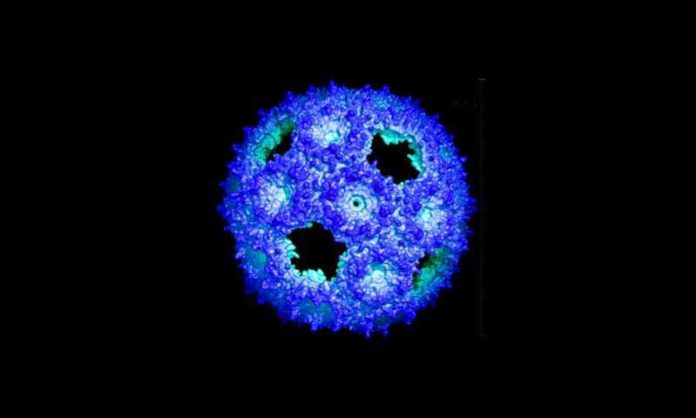Bacteria across our planet contain nanometer-sized factories that do many different things. Some make nutrients, others isolate toxic materials that could harm the bacteria. We have barely scratched the surface of their functional diversity.
But all share a common exterior, a shell made of protein tiles, that Michigan State University researchers are learning how to manipulate in the lab. This will allow them to build factories of their own design, using the natural building blocks. Indeed, scientists see the structures as a source of new technologies. They are trying to repurpose them to do things they don’t in nature.
In a new study, the lab of Cheryl Kerfeld reports a new genetically engineered shell, based on natural structures and the principles of protein evolution. The new shell is simpler, made of only a single designed protein. It will be easier to work with and, perhaps, even evolve in the lab. The study is published in ACS Synthetic Biology.
Natural shells are made of up to three types of proteins. The most abundant is called BMC-H. Six BMC-H proteins come together to form a hexagon shape to tile the wall.
At some time in evolutionary history, some pairs of BMC-H proteins became joined together, in tandem. Three of these mergers, called BMC-T, join to also form a hexagon shape.
“The two halves of a BMC-T protein can evolve separately while staying next to each other because they are fused together,” said Bryan Ferlez, a postdoc in the Krefeld lab. “This evolution allows for diversity in the structures and functions of BMC-T shell proteins, something that we want to recreate by design in the lab.”
Taking their cue from this natural evolution of shell proteins, the team created an artificial BMC-T protein, called BMC-H2, by fusing two BMC-H protein sequences together. The new design was successful.
“To our surprise, BMC-H2 proteins form shells on their own,” said. Sean McGuire a former undergraduate research student and technician in the Krefeld lab. “They look like wiffle balls, with gaps in the shell,”
This is because natural shells are icoshedral, meaning that they are made of hexamers and pentamers—think of a soccer ball.
Next, the team capped the gaps in the wiffle ball shell with BMC-P, the third type of shell protein that forms pentamers.
“The result is a shell, about 25 nanometers wide, made up of only two protein types: the new BMC-H2 and BMC-P,” Bryan says. “It is around half the size of the structure built with all three protein types.”
The next goal is to fit it with custom enzymes and fine tune it to enhance the chemical reactions within. The new ‘designer’ shell could have used in biofuel production, medicine, and industrial applications.
